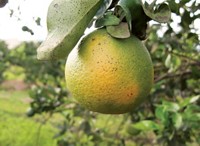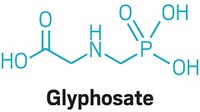Advertisement
Grab your lab coat. Let's get started
Welcome!
Welcome!
Create an account below to get 6 C&EN articles per month, receive newsletters and more - all free.
It seems this is your first time logging in online. Please enter the following information to continue.
As an ACS member you automatically get access to this site. All we need is few more details to create your reading experience.
Not you? Sign in with a different account.
Not you? Sign in with a different account.
ERROR 1
ERROR 1
ERROR 2
ERROR 2
ERROR 2
ERROR 2
ERROR 2
Password and Confirm password must match.
If you have an ACS member number, please enter it here so we can link this account to your membership. (optional)
ERROR 2
ACS values your privacy. By submitting your information, you are gaining access to C&EN and subscribing to our weekly newsletter. We use the information you provide to make your reading experience better, and we will never sell your data to third party members.
Environment
EU Agency Says Neonicotinoids Can Pose High Risks To Bees
by Britt E. Erickson
August 31, 2015
| A version of this story appeared in
Volume 93, Issue 34

Three neonicotinoid pesticides—clothianidin, imidacloprid, and thiamethoxam—may pose more of a risk to bees than previously thought, new studies by the European Food Safety Authority (EFSA) conclude. The studies find that in some cases spraying the chemicals onto the leaves of plants poses a high risk to bees, and in other cases a high risk can’t be ruled out (EFSA Journal 2015, DOI: 10.2903/j.efsa.2015.4210, 10.2903/j.efsa.2015.4211, and 10.2903/j.efsa.2015.4212). EFSA also reports that it was unable to complete assessments for some foliar spraying uses of the chemicals because of insufficient data. The studies prompted environmental groups to call for the European Union to extend an existing two-year ban on the use of the chemicals. Those restrictions went into effect in 2013, after assessments by EFSA showed the three substances posed a high risk to bees when used as seed treatments or in granular form. In coming months, EFSA will reassess risks posed from use of the three chemicals as seed treatments and in granular form. EFSA is seeking submissions of new information about the chemicals until Sept. 30.





Join the conversation
Contact the reporter
Submit a Letter to the Editor for publication
Engage with us on Twitter